90 years of the Olympus company - Olympus F.Zuiko Auto-S 50 mm f/1.8 versus Olympus ZD 50 mm f/2.0 Macro
9. Ghosting, flares and transmission
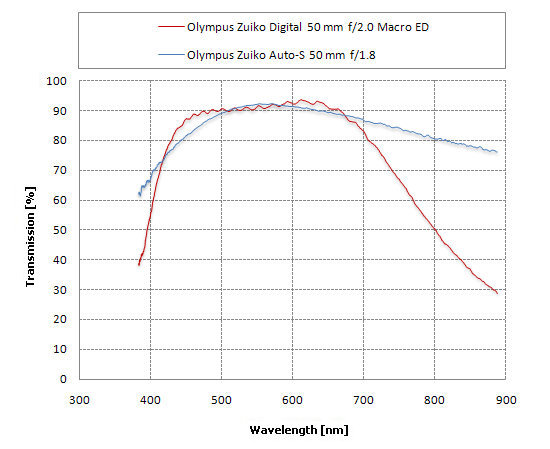 |
In the middle of the visible spectrum the transmission results for both lenses are practically the same and amount to 91%. It means that the new lens loses on one surface about 0.4% of light and the old – almost 1%. This result of 1% is a very decent one, taking into account the age of the lens.
Please Support UsIf you enjoy our reviews and articles, and you want us to continue our work please, support our website by donating through PayPal. The funds are going to be used for paying our editorial team, renting servers, and equipping our testing studio; only that way we will be able to continue providing you interesting content for free. |
- - - - - - - - - - - - - - - - - - - - - - - - - - - - - - - - - - - - - - - - - - - - - - - -
The chart shows, however, one more important thing. Modern multi-layered coatings are optimized for a wide range of wavelength. The 90% transmission spreads from the blue light (near 460 nm) to the red light (near 660 nm). The old lens has coatings which are designed to work well in the middle of the visible spectrum in turn. Under 500 nm the transmission starts to decrease dynamically and it reaches 80% as soon as at about 450 nm wavelength. What’s interesting, the old lens fares well in the red and infrared part of the visible spectrum. For all those who like playing with the infrared photography it seems to be an ideal instrument, much better than the contemporary ZD construction.
The Olympus F.Zuiko 50 mm f/1.8’s dynamic transmission decrease in the blue spectrum makes the work against the bright light problematic. Clearly visible artifacts and flares have precisely that telltale blue hue. Unfortunately, the light reflected on the older coatings doesn’t disappear and causes such artifacts, as those shown in the pictures below.
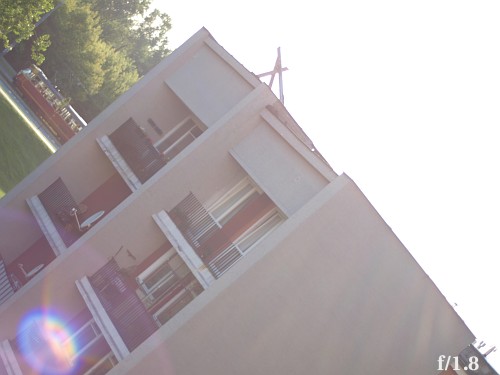 |
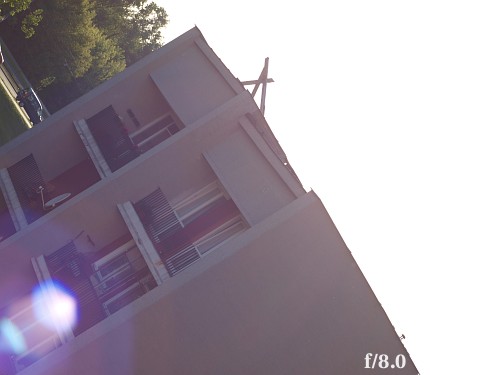 |
The new lens fares definitely better in this category. The shots, taken in the same conditions show at least a slight contrast decrease and the lack of any distinct light artifacts.
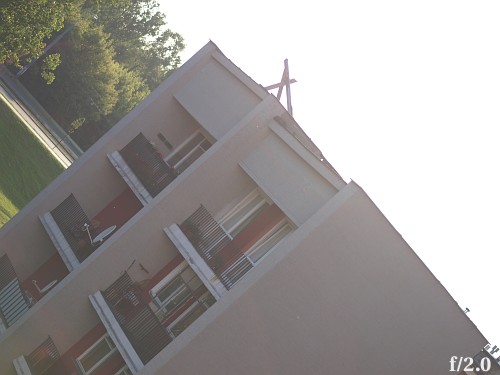 |
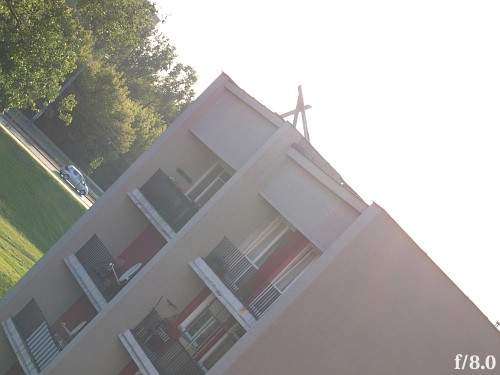 |






